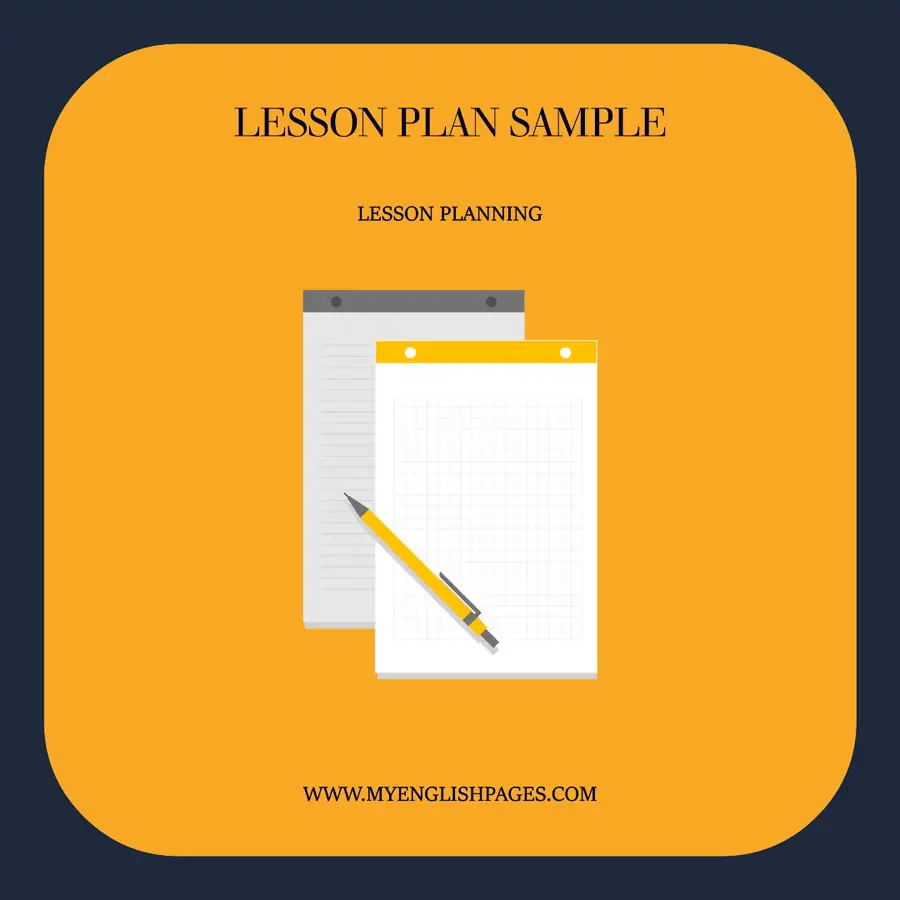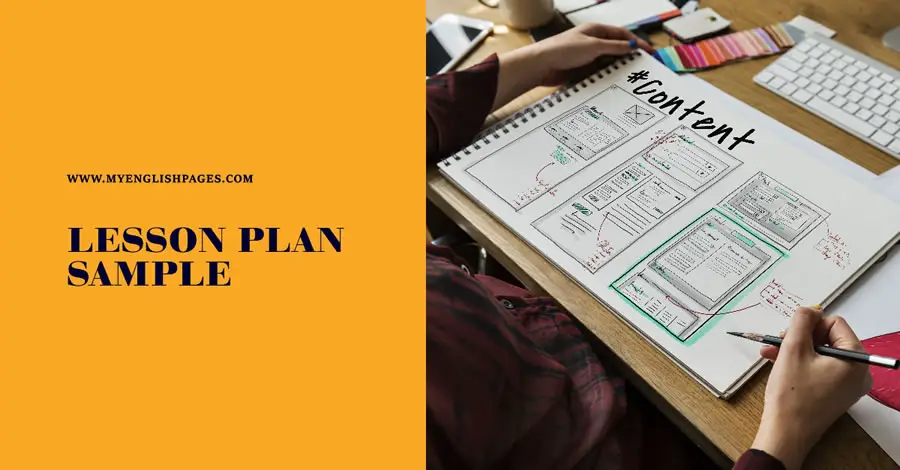Table of Contents
Introduction
Creating a well-thought-out lesson plan is a crucial step in preparing for a successful class. In this post, I’ll share a lesson plan sample that I personally use to organize my teaching. Before diving into the sample, let’s explore why lesson plans are essential tools for educators.
>>Read more about why teachers need lesson plans.<<
Why Teachers Need Lesson Plans

A lesson plan is more than just a roadmap—it helps teachers organize their thoughts and ensure a logical flow to the lesson. While it doesn’t guarantee success, it provides structure and helps the teacher remain focused on their objectives. A good lesson plan outlines the key decisions a teacher makes regarding methods, strategies, and procedures, serving as a guideline for effective classroom management.
Components of a Lesson Plan Sample

An effective lesson plan typically includes the following components:
Lesson Plan Sample Components
A well-structured lesson plan includes several key components, each serving a specific purpose to ensure the lesson runs smoothly.
- The first essential element is the Date, which specifies when the lesson will take place. This helps in organizing lessons chronologically and keeping track of the progression through the curriculum.
- Next is the Lesson/Unit Number and Title. Clearly identifying the lesson number and unit title allows both the teacher and students to know where they are in the overall scheme of the course. It helps in maintaining continuity from one lesson to the next and ensuring that lessons build upon one another.
- The Course Type should also be indicated. Whether the lesson is focused on reading, listening, or other skills, this classification provides clarity on the lesson’s primary focus, ensuring that the objectives and activities align with the course goals.
- Another important aspect is the Instructional Aids and Materials. These are the tools, materials, or technology needed for the lesson, such as textbooks, handouts, audiovisual equipment, or online resources. Listing them in advance ensures that everything is prepared and available when needed, which minimizes disruptions during the lesson.
- Objectives or Standards outline the specific goals for the lesson. These are the learning outcomes students should achieve by the end of the session. Having clear objectives helps the teacher focus on what is most important and provides measurable criteria for evaluating student success.
- A detailed Lesson Outline is another vital part of the plan. It provides a step-by-step guide to the lesson’s content and activities, ensuring that the teacher stays on track and covers all necessary material. This outline serves as a roadmap for the entire lesson, helping the teacher anticipate transitions between activities.
- Timing is also crucial. Allocating specific time blocks for each part of the lesson helps ensure that everything is covered within the available class period. It also allows the teacher to pace the lesson appropriately, avoiding rushing through important points or running out of time for critical activities.
- Finally, the Assignments section details any classwork or homework tasks that students need to complete. These tasks help reinforce what has been taught in the lesson and provide opportunities for students to apply their learning outside of the classroom.
Together, these components form a cohesive and effective lesson plan, ensuring that both teacher and students remain focused and engaged throughout the lesson.
Sample Lesson Plan (PDF)
Here’s an example of a lesson plan that you can download and adapt to your needs. It contains the following sections:
- Date
The specific date of the lesson. - Lesson Number
Identify the lesson in the unit sequence. - Unit
The broader topic or unit of study. - Instructor
The name of the teacher or instructor. - Topic
The main subject of the lesson. - Objectives/Standards
The learning outcomes or standards the lesson aims to meet. - Instructional Tools and Materials
A list of necessary teaching aids and resources. - Lesson Outline
A detailed step-by-step breakdown of the lesson activities. - Procedure
Specific instructions on how the lesson will be conducted. - Time
Suggested time allocation for each part of the lesson. - Assignments
Tasks for students to complete during or after the lesson. - Notes
Space for additional comments or observations.

Final Thoughts
A lesson plan is a flexible tool—while it provides structure, it should also allow room for spontaneity. Unplanned events or student needs may arise during a lesson, and teachers should be ready to adapt, improvise, and adjust their plans accordingly.
Related Pages
- Print-friendly Blank Simple Lesson Plan Template
- Comprehensive English Lesson Plan Templates with Bonuses
- Lesson Plans and Worksheets
- Effective Lesson Planning For English Language Classrooms
- English Lesson Planning Tips for New Teachers
- Lesson Planning – Components of A Lesson Plan
- Discover The 4As Lesson Plan: Empowering Student-Centered Learning (With Examples)


